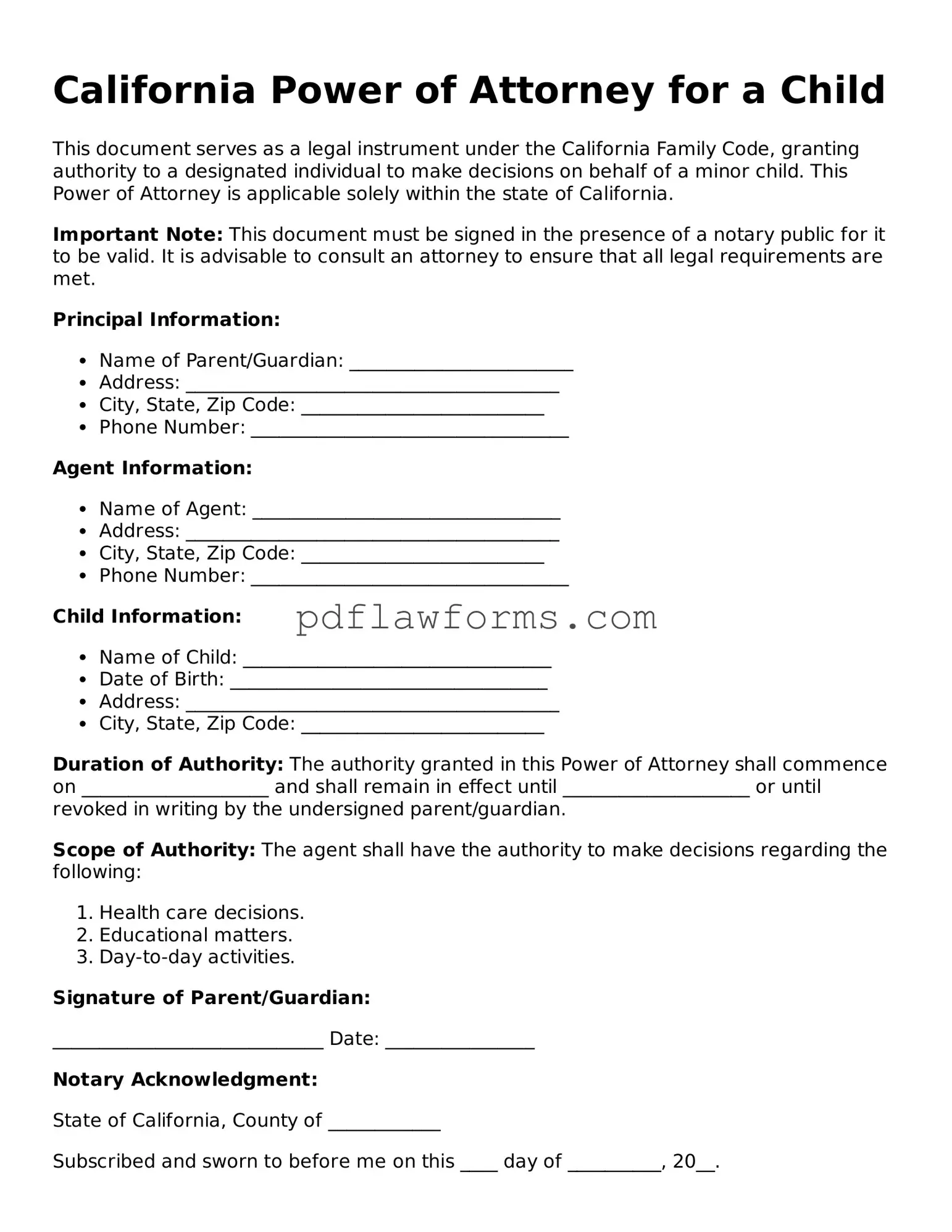Completing the California Power of Attorney for a Child form can be a straightforward process, but several common mistakes can lead to complications. One frequent error occurs when individuals fail to include all necessary information about the child. It is crucial to provide the child's full name, date of birth, and address. Omitting any of these details can result in delays or issues with the document's validity.
Another mistake involves not properly identifying the agent. The person designated to act on behalf of the child must be clearly named. This includes providing their full name, address, and relationship to the child. Inaccuracies in this section can create confusion and may render the document ineffective.
Many people overlook the importance of signatures. Both the parent or guardian and the designated agent must sign the form. Failing to secure the necessary signatures can invalidate the Power of Attorney. Additionally, it is important to ensure that the signatures are dated, as this establishes the timeline of the authority granted.
Some individuals may not consider the duration of the Power of Attorney. Specifying the length of time the authority is granted is essential. Without this information, the document may be interpreted as indefinite, which can lead to misunderstandings about the agent's powers.
Another common oversight is neglecting to have the form notarized. In California, notarization is often required for the Power of Attorney for a Child to be legally recognized. Skipping this step can lead to challenges when the agent attempts to exercise their authority.
People sometimes forget to review the form for accuracy before submission. Typos or incorrect information can lead to significant issues. Taking the time to carefully check each section can help prevent these errors and ensure the document serves its intended purpose.
Furthermore, failing to provide copies of the completed form to relevant parties is a mistake that can cause confusion. It is essential to share the Power of Attorney with the agent, the child’s school, and any healthcare providers involved in the child's care. This ensures that everyone is aware of the arrangement and can act accordingly.
Some individuals do not consider the specific powers they wish to grant. The form allows for customization, and it is important to clearly outline what decisions the agent can make on behalf of the child. Without this clarity, the agent may not have the authority needed in critical situations.
Finally, a lack of understanding about the legal implications of the Power of Attorney can lead to issues. It is advisable to seek guidance if there are any uncertainties about the form or its effects. Being informed can help ensure that the child's best interests are protected.
